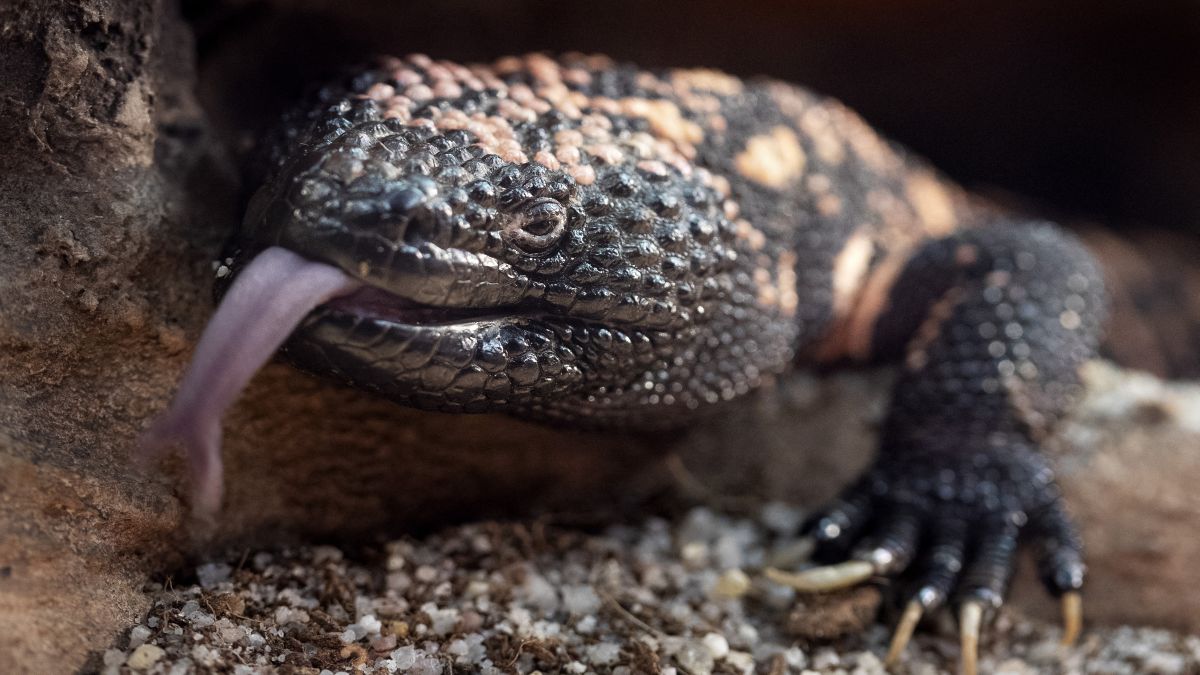The need to be thinner has fuelled the sale of weight-loss drugs such as Ozempic and Wegovy across the globe. In Hollywood, it has become the biggest open secret. It has also racked up billions of dollars in annual sales, making the Danish firm Novo Nordisk one of Europe’s most valuable companies.
But it appears that these ‘miracle’ weight-loss drugs owe their existence to a lizard, namely the venomous Gila monster, which is native to the deserts of North America.
What? Here’s how the venomous lizard is linked to Ozempic-like drugs.
Gila Monster and Ozempic
At the end of the 20th Century, as obesity rates kept rising across the world, Dr Daniel Drucker, an endocrinologist from the University of Toronto, was searching for a hormone that could ape the appetite-suppressing and blood sugar-regulating effects of the human gut’s GLP-1 without breaking down too quickly in the body, reports Science Alert.
His research eventually led him to the work of fellow gastronenterologists — John Eng, Jean-Pierre Raufman and biochemist John Pisano. At the time, the trio was working with the highly poisonous and also one of the most dangerous lizards, the Gila monster, a slow-moving reptile native to the south of the United States and north of Mexico. Their many efforts culminated when they identified what they called exendin-4, which shared structural similarities with the human hormone GLP-1.
What was even more exciting was the fact that exendin-4 did not metabolise quickly. Meaning that it remains active in the body for an extended period, making it a perfect candidate for a diabetes drug.
Excited about his discovery, Eng approached the Department of Veteran Affairs as well as other pharmaceutical companies, without any success. But he remained undeterred and patented the hormone himself. He also licensed the discovery to a now-defunct biotech startup called Amylin.
In 2005, it was finally launched as a treatment for type 2 diabetes under the name exenatide or Byetta. It had to be injected twice a day – a significant drawback – but it worked.
Inspired by this, Danish company Novo Nordisk began its research in GLP-1 as a treatment for diabetes. And after years of research and efforts, they discovered semaglutide, which not only lasted longer in the bloodstream but was found to cause twice as much weight loss in human trials.
This came to be known as the brand name Wegovy for the treatment of obesity and Ozempic for diabetes. In fact, according to Novo Nordisk, Drucker’s research provided the basis for understanding GLP-1 receptor agonists. “Dr Drucker’s research is cited in the publication outlining the discovery of once-weekly semaglutide (Ozempic),” the spokesperson was quoted as saying to Global News.
Meet one of the world’s most deadliest lizard
Gila monsters, scientifically known as Heloderma suspectum, have been named for the Gila River basin, situated in the southwestern United States and northern Mexico, in which they are found. Growing to about 50 cm (about 20 inches), it is the only venomous lizard in the United States.
Experts note that their large heads and muscular jaws yield a strong bite and that is when the venom seeps into the wound. Many teeth have two grooves that conduct the venom, a nerve poison, from glands in the lower jaw.
Famous YouTuber Coyote Peterson, who has been bitten by a Gila monster describes it as one of the “most excruciating, painful situations”. In fact, recounting the incident he said that “within the first two hours of its venom taking effect on my arm, I was in a state of delusion where I actually started considering that removing my arm would be less painful than the feeling of the venom working its way through my system”.
He added, “The pain lasted for about eight straight hours before it started to subside. I had read that the pain was like hot lava coursing through your veins and it does feel like that. Nothing can stop it. There’s no anti-venom.”
Animal venom and medical breakthroughs
Notably, this isn’t the only instance when animal venom has lent to modern medicine. Throughout history, scientists have tapped into the natural world’s most potent toxins to develop life-saving drugs.
For instance, the venom of the Brazilian pit viper inspired a class of drugs known as ACE inhibitors. In the late 1960s, researchers were studying this snake’s venom and its effects on blood pressure. They isolated a peptide from the venom, which could inhibit an enzyme called angiotensin-converting enzyme (ACE) and lead to a decrease in blood pressure. This resulted in the development of a synthetic version of the peptide being created called captopril, reports The Conversation.
While captopril is rarely prescribed today, it did lead to the next generation of ACE inhibitors — enalapril, which is widely used to treat high blood pressure and heart failure.
Some animal venom has also been found useful in treating cancer. In 2004, oncologist Jim Olson was miffed when he learnt that even after a gruelling 14-hour surgery, a thumb-sized portion of a tumour had been left behind in a teenage girl. Wanting to find a better way, he and his team hunted for molecules that could light up cancer cells during surgery. His hunt led him to chlorotoxin, a peptide from the venom of the deathstalker scorpion (Leiurus quinquestriatus). This compound, they found, binds specifically to brain tumour cells, allowing researchers to develop Tozuleristide, a near-infrared fluorescent dye that highlights even the smallest cancerous clusters.
There’s also anticoagulant drugs bivalirudin and desirudin, which are derived from hirudin — a compound that leeches inject into people. Today, these drugs are given to people, who are at a high risk of getting blood clots – such as those with atrial fibrillation, a type of heart arrhythmia.
Today, the US Food and Drug Administration has approved seven drugs derived from animal venom to treat conditions ranging from hypertension and other heart conditions to chronic pain and diabetes. Ten more are in clinical trials.
This is clear proof that the answers to our many questions can be found in the most unexpected places.
With inputs from agencies


)

)
)
)
)
)
)
)
)



